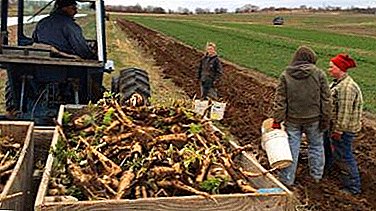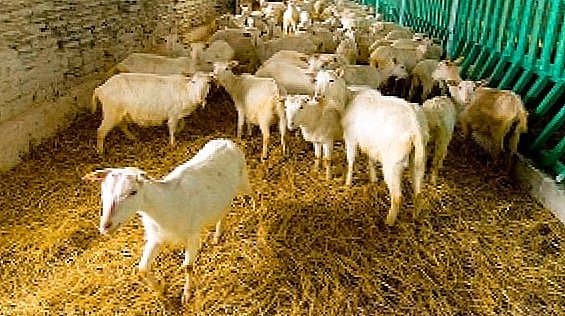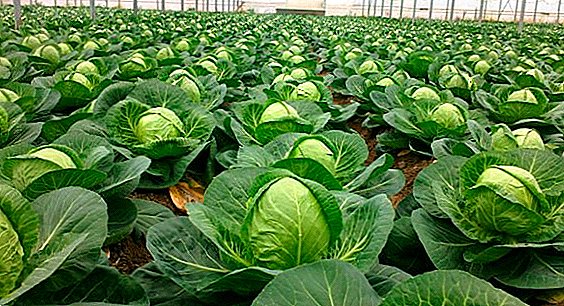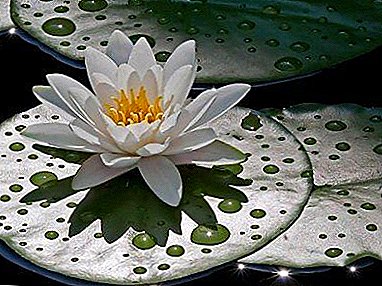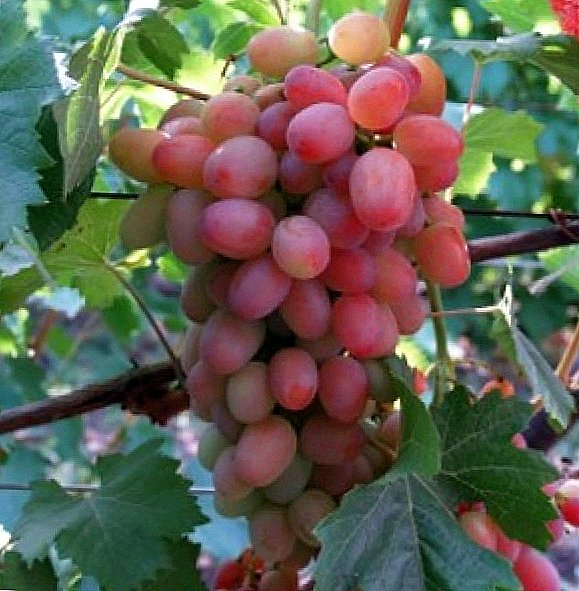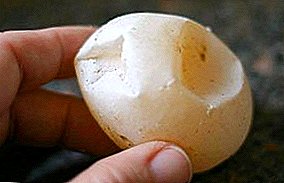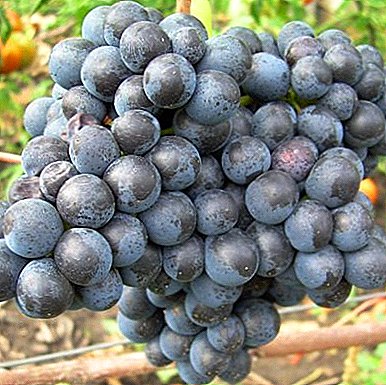
The desire of gardeners to grow grapes overcomes all the obstacles that the climate confronts them.
The varieties and tastes of this sunny berry are so diverse that it is hardly possible to try everything. Very popular with novice growers is Variety Memory Dombkovskoy.
Grapes Memory Dombkovskaya - seedless black winter-hardy variety for northern viticulture. Synonyms of the name: BCHR (Seedless Black Early), ChBZ (Black Seedless Winter-hardy).
The article below describes the grapes "In memory of Dombkovskaya", as well as a description of the variety and photos.
This variety is versatile, but most suitable for making red wine and juice. Drinks from this grape are transparent, have a beautiful ruby color and a very interesting aroma. Universal varieties also include Kishmish Jupiter, Lydia and Alexander.
Breeding history
In memory of Dombkovskaya, the unique Darya of the North and Kishmish varieties were hybridized by the Fedor Ilyich Shatilov, a regional viticulture center in Orenburg, a famous winegrower.
1983 is considered the date of birth of P. Dombkovskaya. At first it was called simply seedless black winter-hardy. This name is still widespread.
But the new name - In memory of Dombkowska - This grape received in Chelyabinsk seven years later and already in 1990 with this name was entered in the state register.
The ChBZ has spread widely from the Urals to the European territory of Russia, but, most importantly, thanks to its high winter hardiness, it has become the favorite of Siberian gardeners.
If you like black grapes, check out Moldova, Bull's Eye and Black Finger.
Description of the variety "In memory of Dombkowska"
 Grapes "Memory Dombkovskoy" description of the variety. The vigorous shrub has large three-lobed dark green leaves. The vine is long, thick, it has time to fully ripen by the time of shelter. Flowers bisexual.
Grapes "Memory Dombkovskoy" description of the variety. The vigorous shrub has large three-lobed dark green leaves. The vine is long, thick, it has time to fully ripen by the time of shelter. Flowers bisexual.
The Cone of Monte Cristo, Galben Nou and Ladannay also possess the flower hollow.
The cluster has a cylindrical shape, its size is medium or large, and the density is very high. The weight of a cluster of medium size is 300-400 g, and the largest - more than a kilogram.
The berries are medium in size, their shape is slightly oblong, almost rounded. Under the thin blue-black skin with a light whitish bloom, pink, very juicy and sweet flesh. Burgundy-colored grape juice, very pleasant to the taste.
Aleshenkin darling, Gurzufsky pink and Korinka Russian have the same signs.
A photo




Features
Memory of Dombkowska famous for its high yield. Some gardeners get up to one hundred kilograms of berries from a bush. A similar yield is demonstrated only by the Gift of Magarach, Rkatsiteli and the Jubilee of Kherson Summer Resident.
At the same time, this variety is also unpretentious in agricultural technology, has a high frost resistance (up to -28 ° C can winter without shelter), and it is sick less often than many other popular varieties.
Maturing term - early. The vegetation period is only 115 days. Fruit depending on the region in late August - early September.
Early ripening is also characteristic of the Gordey, Harold and Muscat white varieties.
Favorite for ChBZ soil - fertile, chernozem or light loamy, on dense soils grapes develop worse. But the soil with the stagnation of groundwater for grapes is absolutely not suitable! When planting, it is preferable to choose sunny places.
The first harvest from young bushes receive already in the third year. By five years, the yield increases significantly.
Diseases and pests
Like any grape, ChBZ may be affected by mildew (downy mildew), oidium (true powdery mildew), anthracnose. But most often, the ChBZ suffers from gray rot due to the high density of the bunch.
First signs of failure mildew: yellow oily spots on the leaves, and on the green shoots spots of gray-brown color.
How to fight?
As a preventive measure, in spring, before the buds swell, the bushes and soil are treated with 5% solution of copper sulphate.
If the bushes were already struck earlier, spraying with a 1-2% solution of Bordeaux liquid is carried out:
- first time - shoots 15-20 cm long,
- the second - after flowering bush.
- non-copper organic substitutes for Bordeaux liquid can be used
The most effective treatment for mildew will be, if it is carried out in an optimal period by a combination of fungicidal preparations of contact and systemic action (Ridomil, Mikal, Efal)
Affected oidimum bushes look as if they were showered with ashes. The leaves on both sides are covered with gray bloom. The plant smells like spoiled fish.
How to fight:
- young leaves are sprayed using any of the following preparations:
- 0.05% potassium permanganate solution,
- 0.2% Fundazole,
- 0.5% soda ash,
- 0.03% byleton
- the second treatment is carried out before flowering with solutions of sulfur preparations
- after flowering spend the third treatment.

Anthracosis manifested in the form of grayish with brown rim spots on the leaves. In the process of destruction on the spot spots are formed holes. The disease is most dangerous for inflorescences.
How to fight:
- as a preventive measure in early spring spraying with 8% solution of ferrous sulfate.
- in the case of manifestation of the disease, triple treatment (at the stage of escape, before flowering and after) with a solution of any of the preparations:
- boricide (0.4%),
- copper oxychloride (0.5%),
- Zineb (0.4%).
Gray rot appears as small watery spots on the berries. In a rainy autumn, you can lose the entire crop, as the moisture on the surface of the berries contributes to the development of the disease.
How to fight:
- during the rest period, treat the vine with a 5% solution of copper sulphate.
- effectively alternating the treatment with a 0.7% solution of soda and 1% green soap.
Bunches affected by gray mold must be destroyed!
Do not forget about such common and dangerous diseases of grapes as bacterial cancer, chlorosis, bacteriosis, rubella. In time taken preventive measures will secure your plants.
In addition to diseases, birds, which simply peck up berries and wasps, eating flesh, cause enormous harm to the PWZ crop.
You can scare away birds with the help of an old tape cassette stretched around the perimeter of the film. The best protection against wasps will be bait-traps made from bottles and filled with sugar syrup or honey.
Having flown into such a trap, the sweet tooth will not be able to escape to freedom.
Do not think that grapes are a purely southern and capricious culture. Sunny, suitable climate, moderate humidity, earth and caring hands - this is what this berry needs.
And not capricious Variety Memory Dombkovskoy be sure to reward caring for a bountiful harvest.


